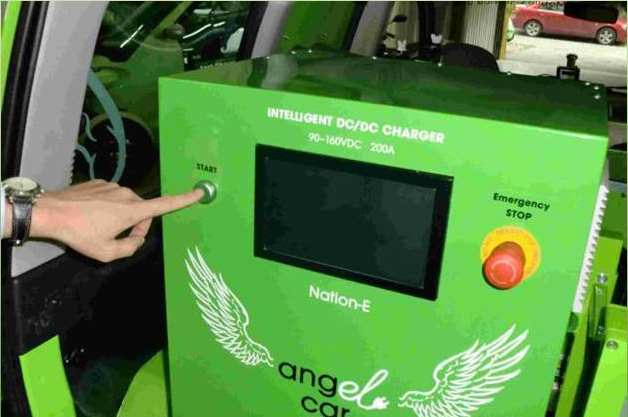Earlier this week Swiss-based Nation-E announced the Angel Car, a vehicle which the company says will aide stranded electric cars with flat battery packs. Designed to help alleviate the range anxiety many commentators cite as the major hurdle to widespread EV success, the Angel Car is only a phone call away.
Think of it as the AAA of the electric car world.
But with the average daily drive of a car well under the 100 mile range of highway-capable electric cars like the 2011 Nissan Leaf and 2011 Coda Sedan, are emergency mobile EV chargers really necessary or are they a phenomenon only really needed with small Neighborhood Electric Vehicles (NEVs)?
With that in mind, does the Angel Car do more harm than good, creating a solution to a problem that doesn't really exist?
Yes, it's true that cars break down. Regardless of how well maintained it is, every car has the potential to break down. But that’s why groups like the AAA exist.
To assist when things go wrong.
With careful maintenance, most cars will suffer few unexpected breakdowns. But many AAA call outs are for more benign, more avoidable situations. Folks who lose their keys, can’t change a tire and forget to fill up with gasoline. It’s these customers who make up the backbone of every breakdown mechanic’s day. If people forget to fill up with gasoline, surely people will forget to plug in?
Humans are forgetful creatures after all.When was the last time you forgot to take your keys with you, or missed a favourite TV show? Taking this argument to a logical conclusion leads to the inevitable answer that vehicles like the Angel Car are needed.
Or are they?
The problem seems to stem from nomenclature. The press and the general public are happy to call anything with an electric motor and a battery pack an electric car. Makers of low-speed EVs like to self-identify with larger, more capable electric cars and often compound the confusion.
But not all electric cars are created equal.

Angel Car DC/DC Charger
But in Europe, a hard-core group of individuals think nothing of convoluted trips in these little ‘cars’. Occasionally, convoys of miniature CityEl single-seat cars, with a top speed of just 35 mph and the handling characteristics of a wayward mule can be seen making long road-trips to EV gatherings across Europe. Some owners even take a 1 kilowatt generator with them, squeezed in the trunk.
In some situations where trip distance exceeds predicable range, the Angel Car makes sense.
But as Mitsubishi illustrated on its 2011 i-Miev trans-Canadian trek, full-size, highway capable EVs need a little more power than a small generator can provide to recharge successfully. In the case of the i-Miev, remote charging was provided by a generator on the back of a large pickup truck.
The alternative, as with the Angel Car, is to use a backup vehicle containing a large battery pack, capable of perhaps two or three 'emergency top-ups' before returning to base. Eco-friendly DC charging, but limited in capacity.
Regardless, such vehicles hardly create positive media for electric vehicles, already criticized as having limited range’ - even when range per-charge exceeds the requirements of most consumers.
As for a missed charge? Most 2011 Nissan Leaf owners will likely only drive 20 to 40 miles in the course of a day - well within the car’s range. Forgetting to plug in for one night is unlikely to result in running out of power the following day. Does the AAA need an emergency backup truck for stranded EV owners? Are "Angel Cars" needed?
No.
After all, most EVs will reside in urban and suburban areas and will do little more than the daily commute. With fast chargers and clear range predictions on-board, we think all the AAA will need to carry is carry something they already do - a towing dolly.













